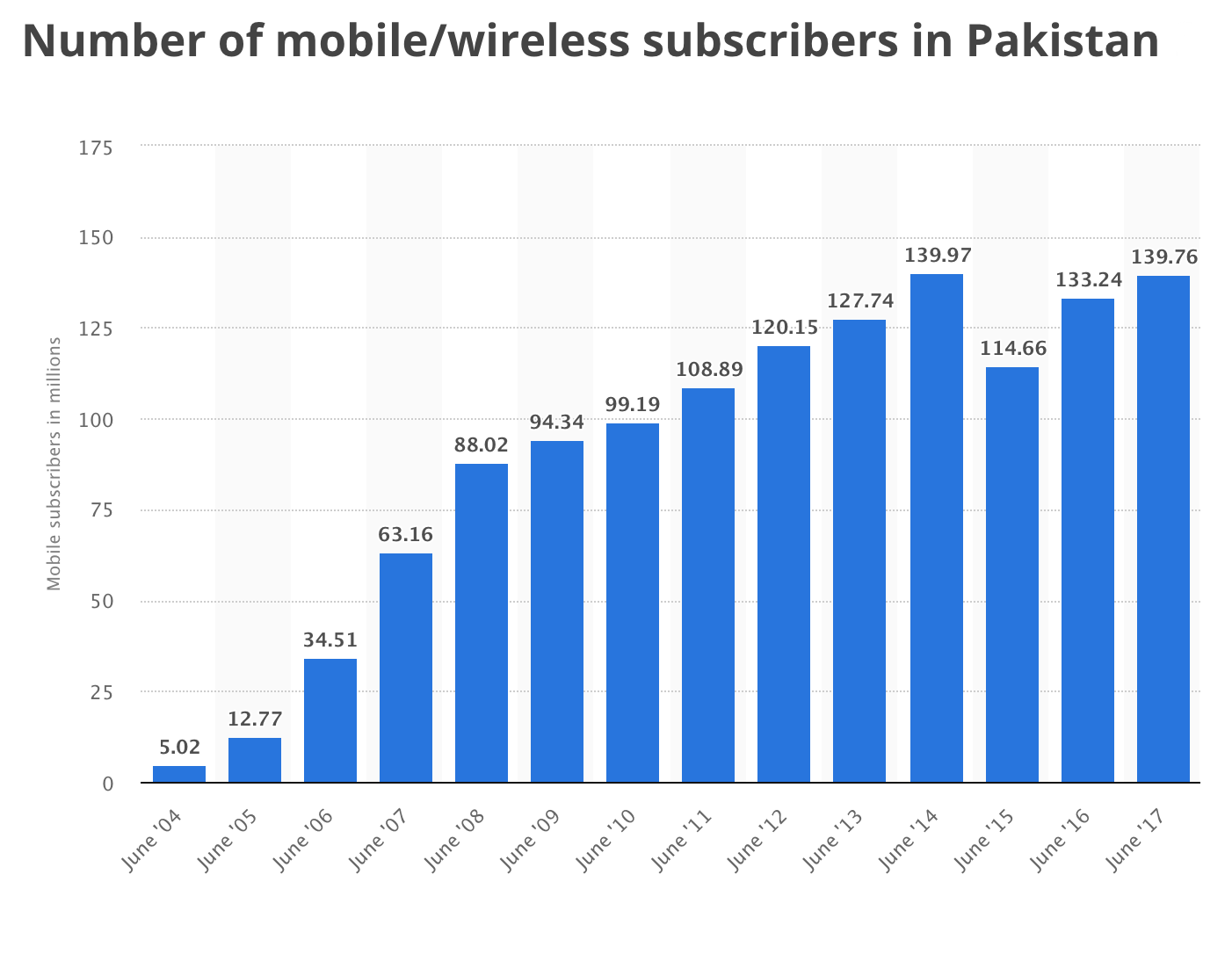Pakistan ICT and Internet Economy Report (Part 05/09)
The Mobile Device Industry
Mobile devices have also been on the rise since the advancement of the telecom sector in the country. At the beginning of the 1990s, using a cell phone was considered to be luxury and hardly anyone could afford it. As time passed, the industry saw a revival and more people started buying mobile phones for their personal and business use. The industry experienced rapid expansion which gave a chance for international mobile companies to invest in this particular sector. Observing the socio-economic change in the overall lifestyles of people since the mid-2000s, mobile phones seem to have become an integral part of everyone’s daily life.
In the beginning, the trend started with simple phones brought by Nokia. Those phones were just catering to the need of simply making phone calls. As time advanced, people started to use the device for multiple purpose and companies started to cater to this user behavior by enhancing their devices with more features.
Thus, numerous brands started to enter the Pakistani market bringing mobile phones with various features that attracted users of every class. The market was dominated by Chinese mobile handsets in the beginning. It became easier for all citizens to own a cell phone as Chinese handsets were low in quality but also quite cheap as well. It wasn’t late before smartphones also started to grab the attention of various users as well. Many Chinese companies saw an opportunity in the growing trend of smartphone usage and dominated the local market with Chinese handsets. In 2014, more than 70% of the market share was owned by different companies working under the label of Chinese mobile handset makers.
With the increasing trend in consumption of 3G and 4G technology, the smartphone industry is most likely to develop more and see a lot of competition among mobile device producers. One can easily buy a smartphone integrated with 3G and 4G technology for the price of 10,000 Rupees (95 USD). Nokia, Samsung, Apple, Oppo, Huawei and Qmobile are the larger companies competing for customers in Pakistan. Nokia, Samsung, Qmobile and Huawei have introduced plenty of handsets that are specifically made for low-income classes, whereas Apple and Oppo products are more expensive as they are specifically made for more affluent parts of the population. The marketers have set their hopes on the penetration of 3G and 4G technologies as it would revolutionize the smartphone handset industry and mobile companies would certainly have a lot more to offer within a reasonable price range.
Increasing Sales and Taxes
The mobile industry of Pakistan has been on a steady growth since its inception. The outlook is bright considering the introduction of 3G and 4G technology enabled devices. These products will allow the big brands to invest more in devices that are not just capable of calling or texting but internet browsing as well. A prominent increase in the shipment of smartphones was observed in the first half of 2015. With such prevalence, the smartphone will soon replace the feature phones and there will be a massive shift in the buying patterns of customers.
In 2015, 30% of the devices imported to Pakistan were smartphones which is a precedent of an upcoming boom that will take place in the near future with the rise of smartphone usage. Companies will keep on investing which will give a push to the fierce competition. With each company spending millions on research and development, chances of reaching a saturated market are on the rise. Therefore, all companies need to devise comprehensive marketing strategies to stand out in a highly competitive environment.
On the other hand, this development will most likely be hindered by the imposition of sales tax charged on mobile phones in the recent budget of the Pakistani government. It was decided that mobile phones with high level of technologies will bear taxes accordingly, which is a major drawback for potential investors and mobile device makers. Chances are that the penetration of smartphones will not make much of a difference if the tax is imposed. However, the people that will mostly be affected by this tax implementation are the low-income groups who seek to buy mobile phones at an affordable range.
With such technology adverse policies, the government is blocking the way for improvements in the industry. Things could get difficult and users could hesitate to buy phones which eventually will have a negative outcome as it is going to increase illegal mobile phone imports. From cheap phones to those integrated with the latest technology, all of them will come under the tax net, making things more difficult for the end users who are already under the burden of taxes. It’s about high time for the Pakistani government to realize that by promoting such policies, it will bring disadvantages to the development of the country's economy as sales could go down due to high taxation. There is no harm in providing users with the relief of affordable technology if the country wants to boost economic progress and stability.
Coming next: Getting Connected
Previous postings of this report:
Part 1: Introduction
Part 2: The Big Four of Pakistani Telecommunication
Part 3: New Technologies and Challenges for the Market
Part 4: Pakistan Going Mobile
